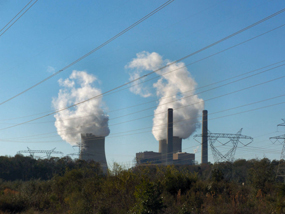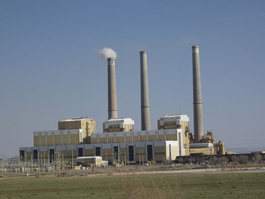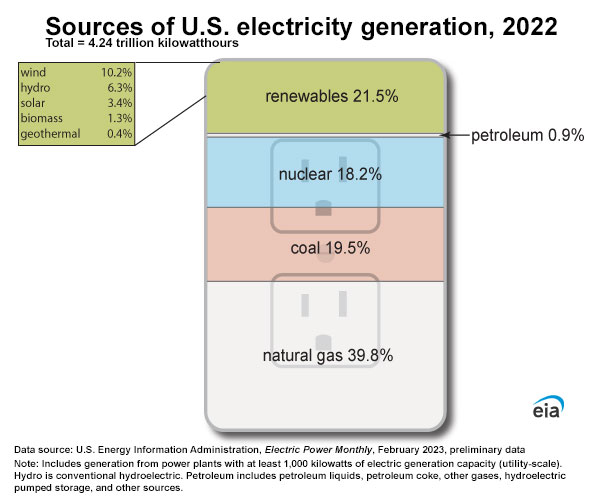Electricity in the U.S. basics
Electricity in the United States is produced with diverse energy sources and technologies
The United States uses many different energy sources and technologies to generate electricity. The sources and technologies have changed over time and some are used more than others.
The three major categories of energy for electricity generation are fossil fuels (coal, natural gas, and petroleum), nuclear energy, and renewable energy sources. Most electricity is generated with steam turbines using fossil fuels, nuclear, biomass, geothermal, and solar thermal energy. Other major electricity generation technologies include gas turbines, hydro turbines, wind turbines, and solar photovoltaics.
Fossil fuels are the largest sources of energy for electricity generation
Natural gas was the largest source—about 40%—of U.S. utility-scale electricity generation in 2022. Utility-scale are systems with at least 1,000 kilowatts (or 1 megawatt) of electricity generation capacity. Natural gas is used in steam turbines and gas turbines to generate electricity.
Coal was the third-largest energy source for U.S. utility-scale electricity generation in 2022—about 18%. Nearly all coal-fired power plants use steam turbines. A few coal-fired power plants convert coal to a gas for use in a gas turbine to generate electricity.
Petroleum was the source of less than 1% of U.S. utility-scale electricity generation in 2022. Residual fuel oil and petroleum coke are used in steam turbines. Distillate—or diesel—fuel oil is used in diesel-engine generators. Residual fuel oil and distillates can also be burned in gas turbines.
Nuclear energy provides about one-fifth of U.S. electricity
Nuclear energy was the source of about 18% of U.S. utility-scale electricity generation in 2022. Nuclear power plants use steam turbines to produce electricity from nuclear fission.
Renewable energy sources provide nearly 20% of U.S. electricity
A variety of renewable energy sources are used to generate electricity and were the source of about 22% of total U.S. utility-scale electricity generation in 2022.
Wind energy was the source of about 10.2% of total U.S. utility-scale electricity generation and accounted for 47.6% of utility-scale electricity generation from all renewable energy sources in 2022. Wind turbines convert wind energy into electricity.
Hydropower plants produced about 6.2% of total U.S. utility-scale electricity generation and accounted for 28.7% of utility-scale electricity generation from renewable sources in 2022. Hydropower plants use flowing water to spin a turbine connected to a generator.
Solar energy provided about 3.4% of total U.S. utility-scale electricity and accounted for 15.9% of utility-scale electricity generation from renewable sources in 2022. Photovoltaic (PV) and solar-thermal power are the two main types of solar electricity generation technologies. PV conversion produces electricity directly from sunlight in a photovoltaic cell. Most solar-thermal power systems use steam turbines to generate electricity. EIA estimates that about 0.06 trillion kWh of electricity were generated with small-scale solar photovoltaic systems in 2022. Small-scale includes systems with less than 1,000 kilowatts of electricity generation capacity.
Biomasswas the source of about 1.3% of total U.S. utility-scale electricity generation and accounted for 5.9% of electricity generation from renewable sources in 2022. Biomass is burned directly in steam-electric power plants, or it can be converted to a gas that can be burned in steam generators, gas turbines, or internal combustion engine generators.
Geothermal power plants produced about 0.4% of total U.S. utility-scale electricity generation and accounted for 1.9% of electricity generation from renewable sources in 2022. Geothermal power plants use steam turbines to generate electricity.
How electricity gets to your home
Electricity is delivered to consumers through a complex network
Electricity is generated at power plants and moves through a complex system, sometimes called the grid, of electricity substations, transformers, and power lines that connect electricity producers and consumers. Most local grids are interconnected for reliability and commercial purposes, forming larger, more dependable networks that enhance the coordination and planning of electricity supply.
In the United States, the entire electricity grid consists of hundreds of thousands of miles of high-voltage power lines and millions of miles of low-voltage power lines with distribution transformers that connect thousands of power plants to hundreds of millions of electricity customers all across the country.

Electricity & the environment
Although electricity is a clean and relatively safe form of energy when it is used, the generation and transmission of electricity affects the environment. Nearly all types of electric power plants have an effect on the environment, but some power plants have larger effects than others.

Source: Ebyabe, Wikimedia Commons author (GNU Free Documentation License) (public domain)

Source: Tricia Simpson, Wikimedia Commons author (GNU Free Documentation License) (public domain)
The United States has laws that govern the effects that electricity generation and transmission have on the environment. The Clean Air Act regulates air pollutant emissions from most power plants. The U.S. Environmental Protection Agency (EPA) administers the Clean Air Act and sets emissions standards for power plants through various programs such as the Acid Rain Program. The Clean Air Act has helped to substantially reduce emissions of some major air pollutants in the United States.
The effect of power plants on the landscape
All power plants have a physical footprint (the location of the power plant). Some power plants are located inside, on, or next to an existing building, so the footprint is fairly small. Most large power plants require land clearing to build the power plant. Some power plants may also require access roads, railroads, and pipelines for fuel delivery, electricity transmission lines, and cooling water supplies. Power plants that burn solid fuels may have areas to store the combustion ash.
Many power plants are large structures that alter the visual landscape. In general, the larger the structure, the more likely it is that the power plant will affect the visual landscape.
Fossil fuel, biomass, and waste burning power plants
In the United States, about 61% of total electricity generation in 2021 was produced from fossil fuels (coal, natural gas, and petroleum), and about 1.3% was produced from materials that come from plants (biomass), and municipal and industrial wastes. The substances that occur in combustion gases when these fuels are burned include
- Carbon dioxide (CO2)
- Carbon monoxide (CO)
- Sulfur dioxide (SO2)
- Nitrogen oxides (NOx)
- Particulate matter (PM)
- Heavy metals such as mercury
Nearly all combustion byproducts have negative effects on the environment and human health:
- CO2 is a greenhouse gas, which contributes to the greenhouse effect.
- SO2 causes acid rain, which is harmful to plants and to animals that live in water. SO2 also worsens respiratory illnesses and heart diseases, particularly in children and the elderly.
- NOx contribute to ground-level ozone, which irritates and damages the lungs.
- PM results in hazy conditions in cites and scenic areas and coupled with ozone, contributes to asthma and chronic bronchitis, especially in children and the elderly. Very small, or fine PM, is also believed to cause emphysema and lung cancer.
- Heavy metals such as mercury are hazardous to human and animal health.
Power plants reduce air pollution emissions in various ways
Air pollution emission standards limit the amounts of some of the substances that power plants can release into the air. Some of the ways that power plants meet these standards include:
- Burning low-sulfur-content coal to reduce SO2 emissions. Some coal-fired power plants cofire wood chips with coal to reduce SO2 emissions. Pretreating and processing coal can also reduce the level of undesirable compounds in combustion gases.
- Different kinds of particulate emission control devices treat combustion gases before they exit the power plant:
- Bag-houses are large filters that trap particulates.
- Electrostatic precipitators use electrically charged plates that attract and pull particulates out of the combustion gas.
- Wet scrubbers use a liquid solution to remove PM from combustion gas.
- Wet and dry scrubbers mix lime in the fuel (coal) or spray a lime solution into combustion gases to reduce SO2 emissions. Fluidized bed combustion also results in lower SO2 emissions.
- NOx emissions controls include low NOx burners during the combustion phase or selective catalytic and non-catalytic converters during the post combustion phase.
Many U.S. power plants produce CO2 emissions
The electric power sector is a large source of U.S. CO2 emissions. Electric power sector power plants that burned fossil fuels or materials made from fossil fuels, and some geothermal power plants, were the source of about 32% of total U.S. energy-related CO2 emissions in 2021.
Some power plants also produce liquid and solid wastes
Ash is the solid residue that results from burning solid fuels such as coal, biomass, and municipal solid waste. Bottom ash includes the largest particles that collect at the bottom of the combustion chamber of power plant boilers. Fly ash is the smaller and lighter particulates that collect in air emission control devices. Fly ash is usually mixed with bottom ash. The ash contains all the hazardous materials that pollution control devices capture. Many coal-fired power plants store ash sludge (ash mixed with water) in retention ponds. Several of these ponds have burst and caused extensive damage and pollution downstream. Some coal-fired power plants send ash to landfills or sell ash for use in making concrete blocks or asphalt.
Nuclear power plants produce different kinds of waste
Nuclear power plants do not produce greenhouse gases or PM, SO2, or NOx, but they do produce two general types of radioactive waste:
- Low-level waste, such as contaminated protective shoe covers, clothing, wiping rags, mops, filters, reactor water treatment residues, equipment, and tools, is stored at nuclear power plants until the radioactivity in the waste decays to a level safe for disposal as ordinary trash, or it is sent to a low-level radioactive waste disposal site.
- High-level waste, which includes the highly radioactive spent (used) nuclear fuel assemblies, must be stored in specially designed storage containers and facilities (see Interim storage and final disposal in the United States).
Electric power lines and other distribution infrastructure also have a footprint
Electricity transmission lines and the distribution infrastructure that carries electricity from power plants to customers also have environmental effects. Most transmission lines are above ground on large towers. The towers and power lines alter the visual landscape, especially when they pass through undeveloped areas. Vegetation near power lines may be disturbed and may have to be continually managed to keep it away from the power lines. These activities can affect native plant populations and wildlife. Power lines can be placed underground, but it is a more expensive option and usually not done outside of urban areas.



